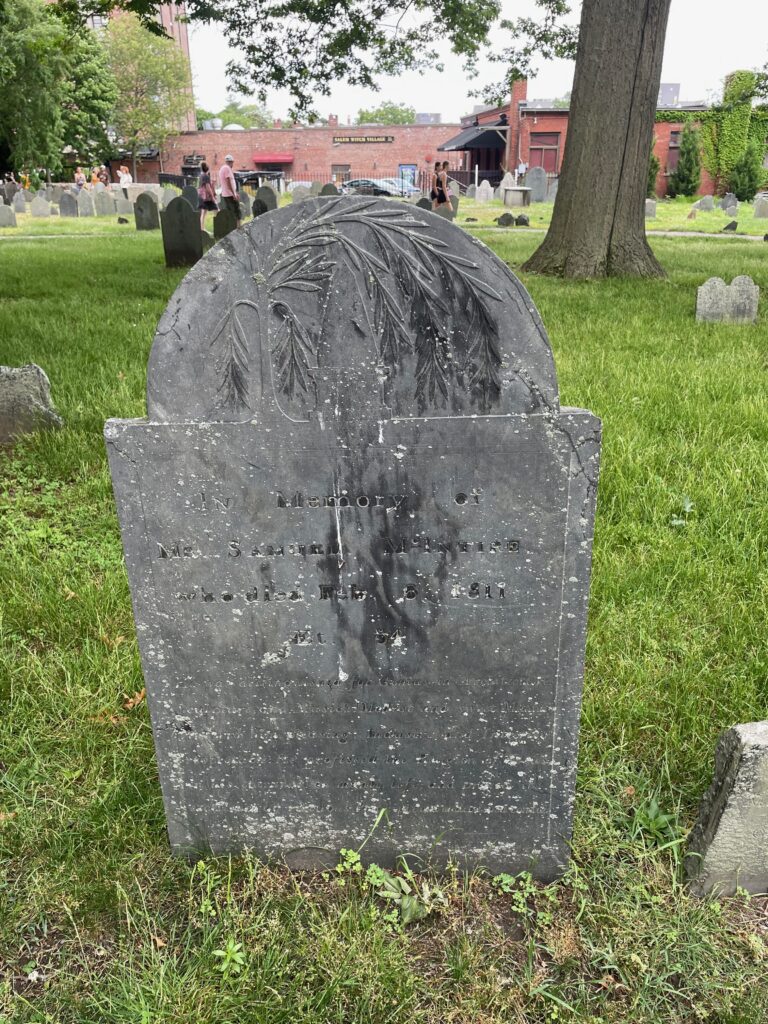Erik Visits an American Grave, Part 1,735
This is the grave of Samuel McIntire.

Born in 1757 in Salem, Massachusetts, McIntire was just a regular guy in his early life, a woodcarver by trade. But he proved good at that and started moving into architecture as a young man. He learned the craft and built himself a pretty basic home in 1786, still in Salem. He wouldn’t be remembered today, to the extent that he is, except that he got the attention of Elias Hasket Derby, the big time Salem merchant and the first millionaire in American history. Derby hired him to remodel his house. Derby liked the work and soon McIntire was building houses for Derby’s family and the Salem elite more generally.
By the early 1790s, McIntire became one of the nation’s premier architects and was a finalist to design the U.S. Capitol. He didn’t get that, but it shows where he was in the nation’s admittedly limited supply of high end architects. His biggest influence was Charles Bulfinch, who had brought the neocolonial style to the United States. Bulfinch frankly was the bigger architect but McIntire was hugely influential in New England. He usually built three story homes around a central hall that got fancier over time, with more ornamentation as the New England elite was willing to pay for it. He started a firm and trained his brothers in architecture too, running a family business. He remained entirely untrained, or self-taught perhaps is the better word.
Bulfinch also did a lot of furniture and sculpture. He was known for his fine woodcarving and detail. He has a famous chair, the so-called McIntire Chair, which he designed for Derby. But the real way to understand McIntire’s work today is the Samuel McIntire Historic District in Salem. It used to be a few different historic districts, but they put it all in one. He did a lot of major buildings that still stand today. Let’s take a look at some of this. Here is the Peirce-Nichols House, from 1782.

Here is the the Stephen Phillips House.

Some of McIntire’s furniture is incredibly valuable. A chair he made sold in 2011 for a mere $662,500, which was the all-time record for Federal Era furniture. This was part of a set of eight he had originally made for Derby. The Peabody Essex Museum, really one of the great American museums, had an exhibition on McIntire’s work back in 2007-08. There’s whole webpages dedicated to McIntire’s furniture that has gone to action. Here’s a couple of examples.


McIntire died in 1811. He was 52 years old.
Samuel McIntire is buried in Burying Point Cemetery, Salem, Massachusetts.
If you would like this series to visit other purveyors of Federal era architecture, you can donate to cover the required expenses here. Asher Benjamin is in Cambridge and John Holden Greene is in Providence. Previous posts in this series are archived here and here.



